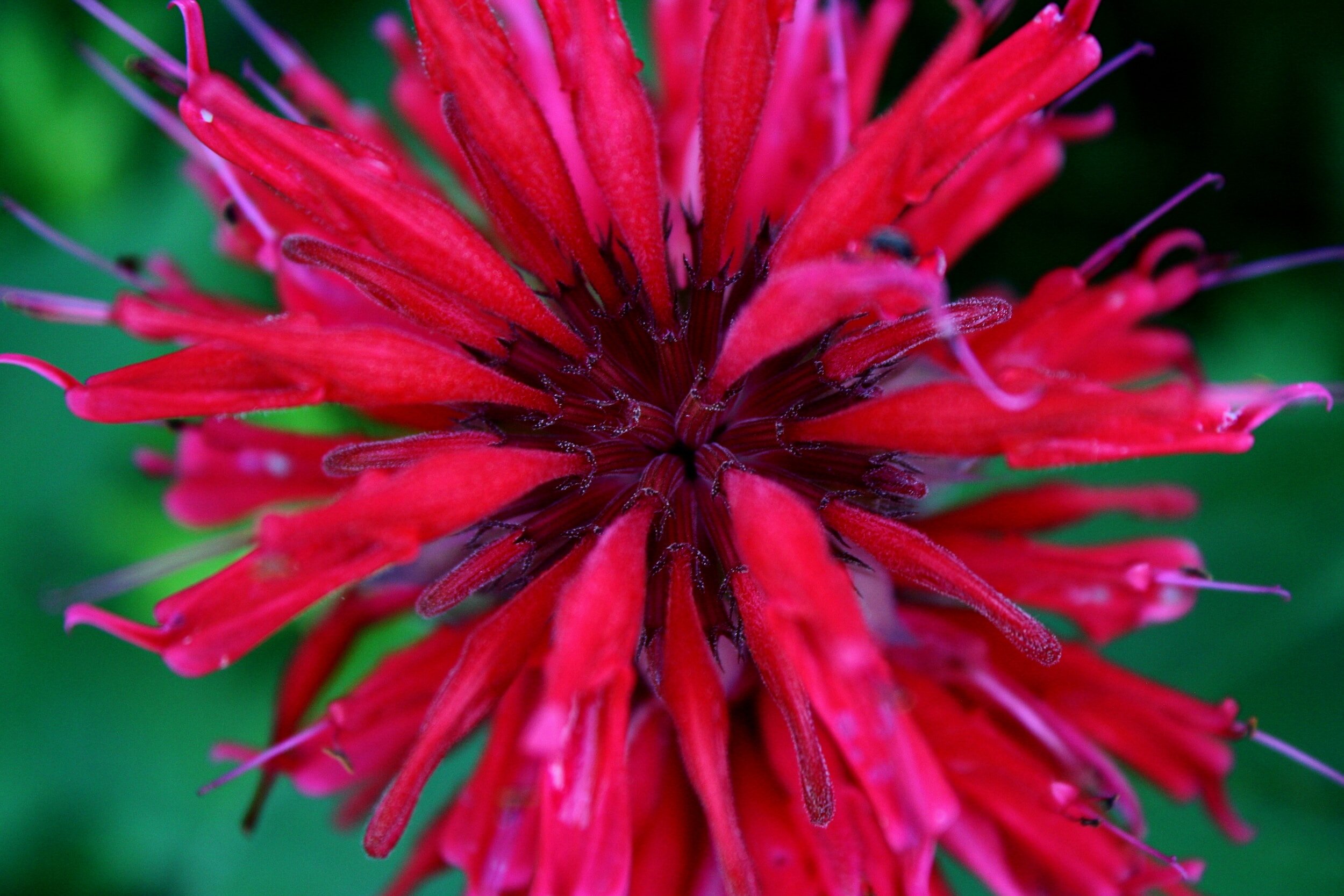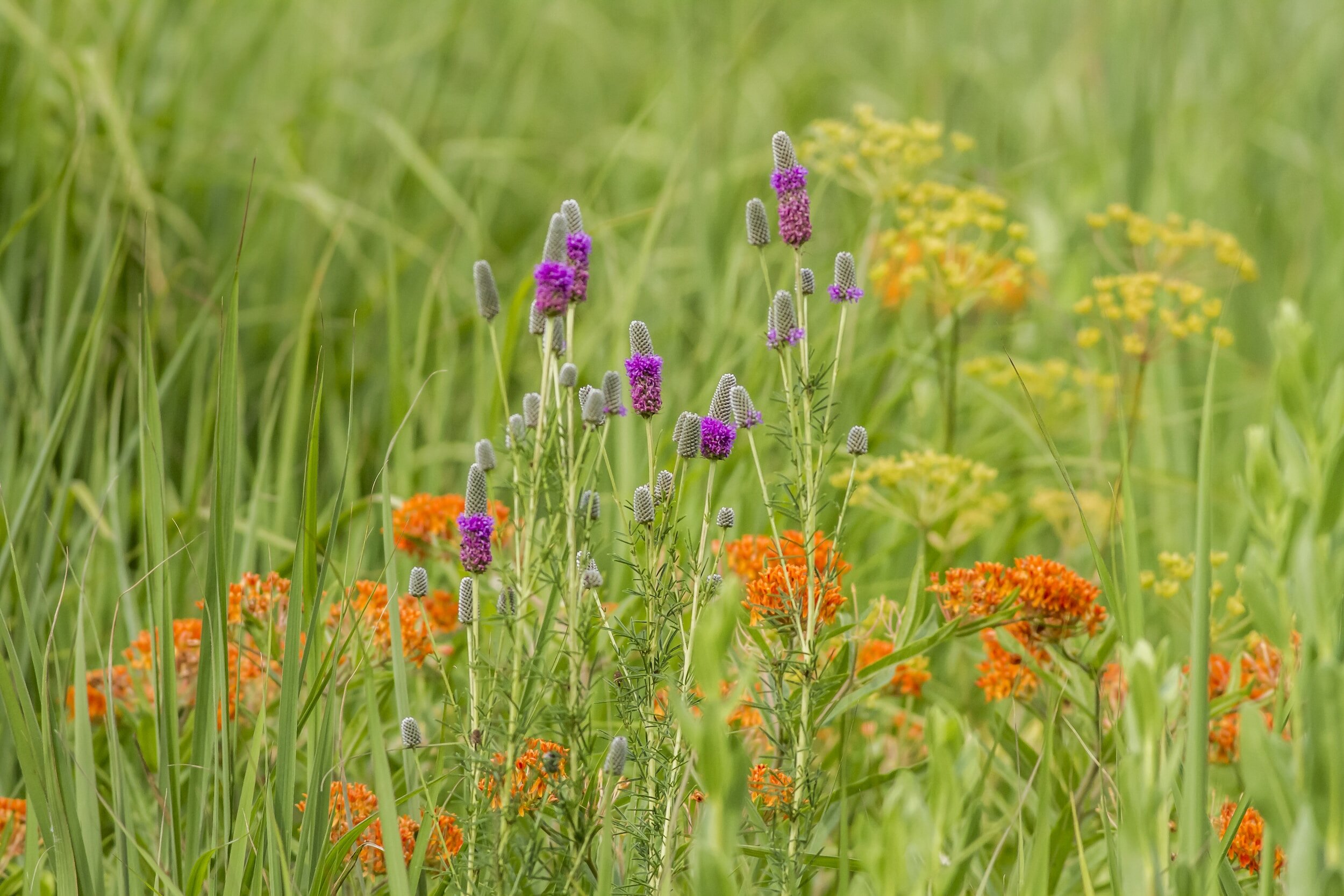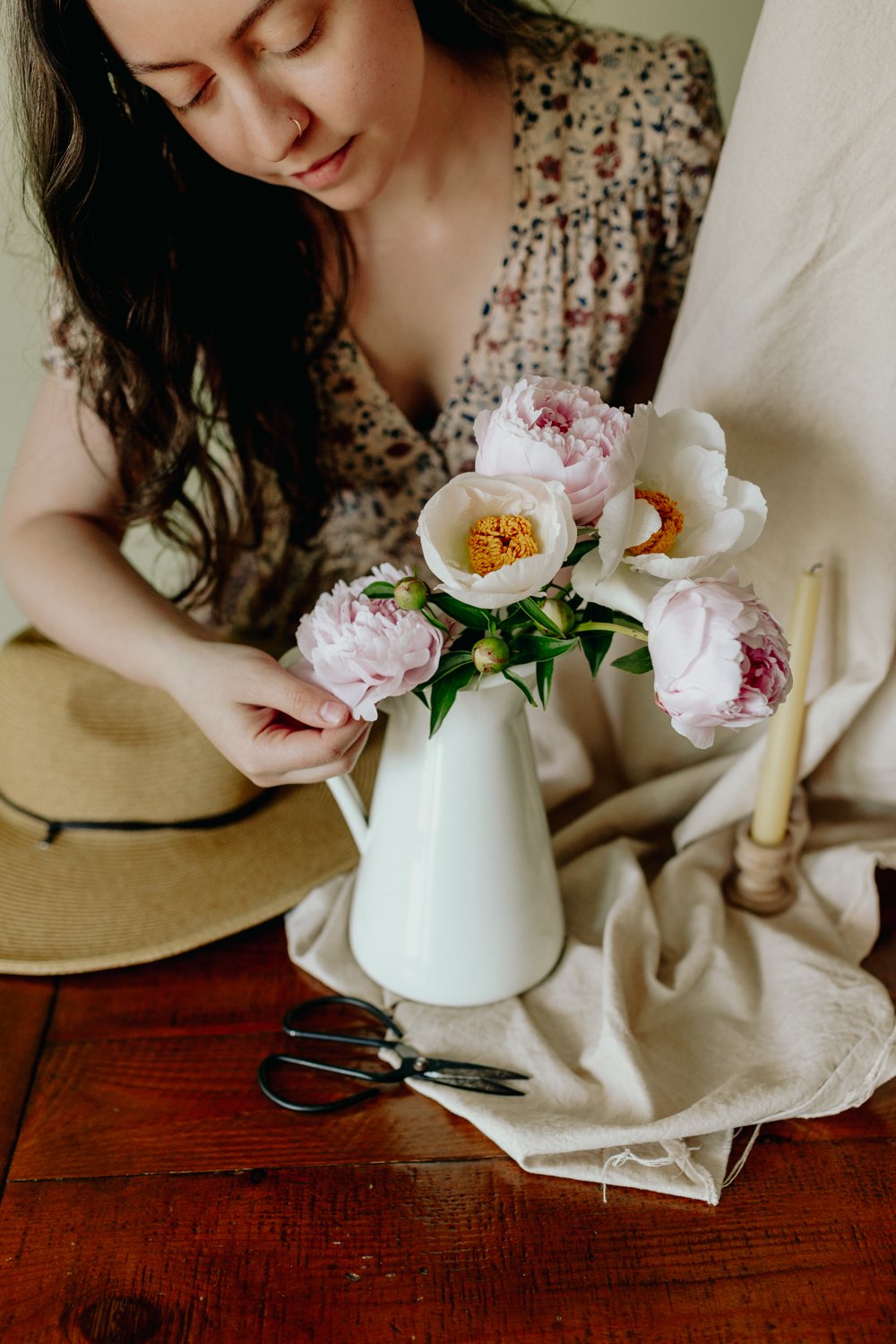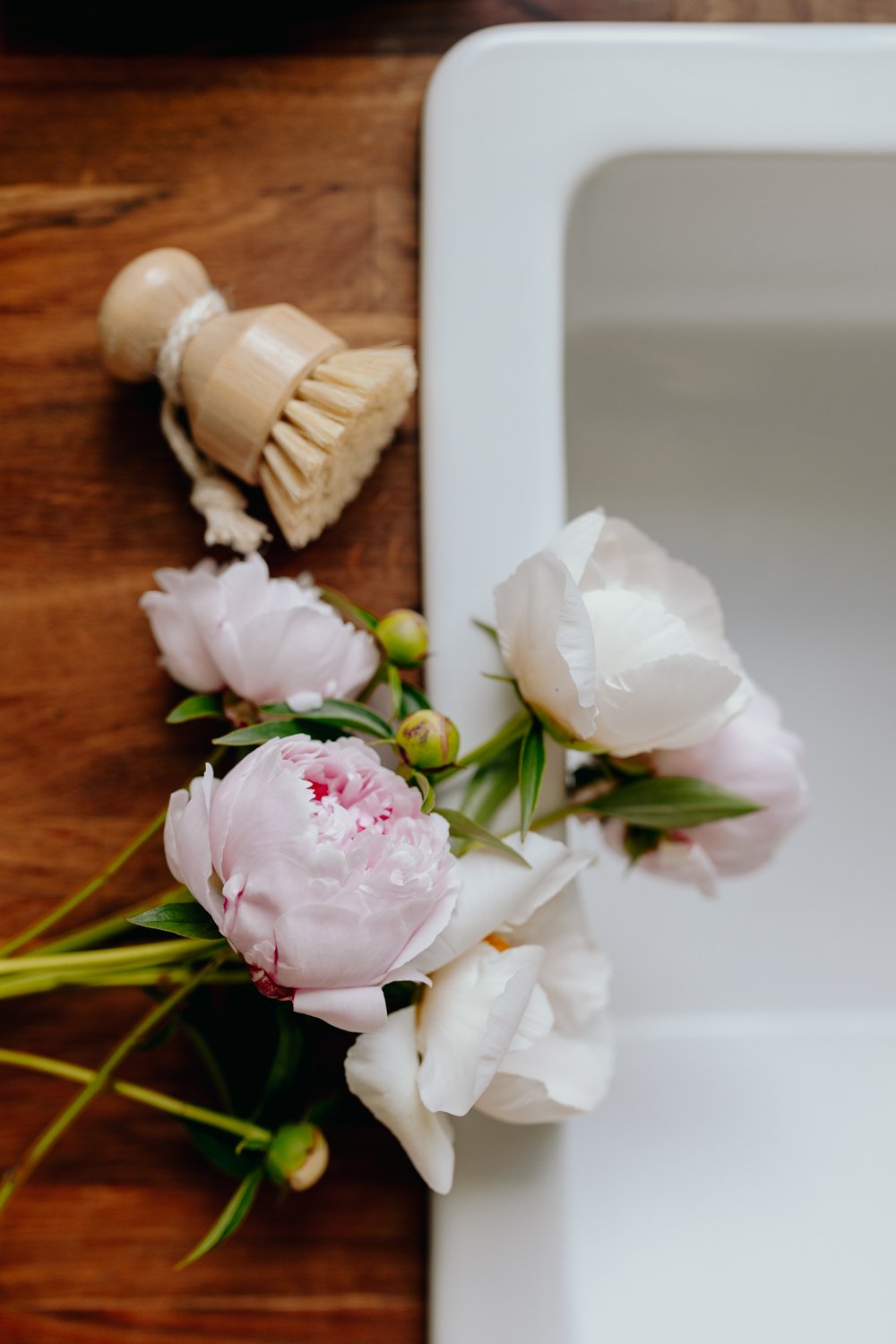BACKYARD GARDENING MADE SIMPLE
Why Should You Plant Native Plants In Your Garden?
Native plants are plants that are naturalized to the area in which they are growing. They originated from the place they are growing, so are well adapted to the climate and generally work in synchronicity with the natural ecosystem of that area. Many non-native plants have been imported to other parts of the world with dire consequences to the native plant populations, as they possess characteristics that make it easy for them to crowd out the native plants or otherwise make the environment unsuitable for the growth of the native plants that were there first.
Native plants are unsung heroes in the symphony of nature, harmonizing with the land's rhythm. While exotic plants may flaunt vibrant allure, local blooms bring something irreplaceable to the garden table. But you don’t need to take my word for it - this blog post is all about the importance of planting native plants in your garden.
What Is A Native Plant?
Native plants are plants that are naturalized to the area in which they are growing. They originated from the place they are growing, so are well adapted to the climate and generally work in synchronicity with the natural ecosystem of that area. Many non-native plants have been imported to other parts of the world with dire consequences to the native plant populations, as they possess characteristics that make it easy for them to crowd out the native plants or otherwise make the environment unsuitable for the growth of the native plants that were there first.
Why Are Native Plants Better Than Non-Native Plants?
Native plants have evolved to withstand local climate challenges. They are like wise elders we can turn to for advice, intimately interconnected in deep understanding with the land's idiosyncrasies. Native plants are a practical addition to your garden design - uniquely formed to adapt to your region's exact pest pressures and weather conditions, they are more resilient than exotic options and can withstand the stresses of your ecosystem more easily because they have co-evolved with native flora and fauna.
Native Plants Conserve Water
Because the root systems and water uptake of native plants has evolved in tandem with the climate in which they grow, less irrigation is needed for them to thrive because they are already used to the amount of water that the soil naturally receives from rainwater. This reduced water consumption can contribute to water conservation and the garden's overall sustainability.
Native Plants Are Low Maintenance
Since native plants are adapted for the soil they grow in, they are pretty laid back plants to grow especially once established. This means you can spend less time and money fertilizing and fighting off pests with constant interventions. If you’ve ever said you just don’t have a green thumb in the past, I can almost guarantee that you’ll have better luck if you try growing native plants instead - with less effort on your part.
Native Plants Are An Important Cultural Touchstone
Native plants are storytellers, weaving tales of a region's history, traditions, and cultural richness. Nurturing plants with cultural significance can help you form deeper relationships with the plants in your area and connect with nature.
How Do You Know If A Plant Is Native To Your Area?
There are a few ways to figure out if a plant is native. One option is to check with local botanical gardens, nurseries, or agricultural extension offices—they often have information about native plants in your area. Field guides specific to your region can also be handy. Online databases or apps designed for identifying local flora can be a quick and convenient resource. Plus, if you have any green-thumbed friends or neighbors, they might have some insights.
What Is The Role Of Native Plants In Supporting Biodiversity?
Native plants play a crucial role in supporting biodiversity for several reasons. First off, they provide habitat and food sources for local wildlife, including insects, birds, and mammals. Many native insects, for instance, have evolved to depend on specific native plants for survival. This forms the basis of the food chain, as birds and other animals rely on insects and other invertebrates for sustenance.
Native plants also contribute to ecosystem stability. Their root systems help prevent soil erosion, and they are adapted to local climate conditions, making them more resilient in the face of environmental changes. Additionally, native plants often have complex relationships with other organisms, such as fungi and bacteria in the soil, creating a healthier and more balanced ecosystem.
When non-native plants are introduced, they can sometimes outcompete native species, leading to a decline in biodiversity. Invasive species may not provide the same level of support for local wildlife, disrupting ecological relationships that have developed over time.
In short, native plants are like the backbone of an ecosystem, providing the essential elements that support a diverse and thriving community of organisms.
What is Native Plants Role in Habitat Creation?
Native plants offer a source of food for local wildlife. They attract insects, birds, and other animals with nectar, fruits, seeds, and foliage. This creates a natural food web where different species rely on each other for sustenance.
The structure of native plants provides shelter and nesting sites for various creatures. Tall grasses, shrubs, and trees create hiding spots and safe havens for birds, mammals, and insects. This is especially important for breeding and raising offspring.
Many native plants have evolved alongside local pollinators. Bees, butterflies, and other insects rely on the nectar and pollen of these plants. By supporting pollinators, native plants indirectly contribute to the reproduction of other plants, including food crops.
How Do Native Plants Attract Native Wildlife?
Native plants have evolved alongside local wildlife, forming intricate relationships that benefit both the plants and the animals. Many native plants produce nectar, a sweet liquid that attracts pollinators like bees, butterflies, and hummingbirds. Pollinators feed on the nectar and, in the process, transfer pollen from one flower to another, facilitating the plants' reproduction.
Native plants often produce fruits and seeds that are attractive to various animals. Birds, mammals, and even insects may feed on these fruits, helping in seed dispersal. Some seeds may even be adapted to survive passage through the digestive systems of certain animals.
Native plants are often the hosts for specific insect species. For example, monarch butterflies lay their eggs exclusively on milkweed plants. By providing a suitable environment for these insects, native plants support the entire food web, as insects are a crucial food source for many other animals.
The coloration and patterns of native plants often provide camouflage for animals. Insects may mimic the appearance of leaves or flowers, while birds and mammals use the vegetation for cover, protecting them from predators.
Native plants may bloom or produce fruits at specific times of the year, aligning with the seasonal needs of local wildlife. This creates a consistent and reliable food source for animals throughout the year.
What Are Some Challenges Faced by Native Plants?
Native plants face several challenges, many of which are a result of human activities and environmental changes. Urbanization, agriculture, and infrastructure development often lead to the loss and fragmentation of natural habitats. This reduces the available space for native plants to thrive and disrupts ecosystems. The introduction of non-native, invasive plant species can outcompete native plants for resources such as sunlight, water, and nutrients. Invasive species may lack natural predators or diseases, allowing them to spread rapidly and displace native flora.
Changes in climate patterns, including temperature increases and altered precipitation patterns, can affect the distribution and growth of native plants. Some species may struggle to adapt to these changes, impacting their survival and reproduction. Air and water pollution, including pollutants from industrial activities and agriculture, can negatively affect native plants. Pollution can alter soil composition, disrupt nutrient cycles, and directly harm plant health.
Native plants can be susceptible to diseases, and the introduction of new pathogens or the spread of existing ones can pose a significant threat. This is particularly relevant in a globalized world where pathogens can be transported across regions. In some ecosystems, fire plays a natural role in maintaining plant diversity. Changes in fire frequency or intensity, often influenced by human activities, can disrupt the balance and negatively impact native plant communities.
Addressing these challenges requires a combination of conservation efforts, sustainable land management practices, and public awareness. Protecting and restoring native plant populations is crucial not only for the plants themselves but for the entire ecosystems they support.
Popular Native Plants In The USA
The United States is home to a diverse range of ecosystems, and each region has its own set of popular native plants. Here are some examples from various regions:
Eastern Redbud (Cercis canadensis): Found in the eastern and central United States, this small deciduous tree is known for its stunning pink or purple flowers in early spring.
Bluebonnet (Lupinus spp.): The Bluebonnet is the state flower of Texas and is part of the lupine genus. These vibrant blue flowers are a common sight in the spring in Texas.
California Poppy (Eschscholzia californica): The California Poppy is the state flower of California and is known for its golden-orange blooms. It thrives in the dry, open landscapes of California.
Black-Eyed Susan (Rudbeckia hirta): Native to the eastern and central United States, Black-Eyed Susans are yellow daisy-like flowers that bloom throughout the summer and are a favorite in gardens.
Milkweed (Asclepias spp.): Milkweed is crucial for the survival of monarch butterflies, as it serves as the sole host plant for their larvae. Various species of milkweed are found throughout the country.
Loblolly Pine (Pinus taeda): A common pine tree in the southeastern United States, the Loblolly Pine is an important timber species and provides habitat for numerous wildlife species.
Sagebrush (Artemisia tridentata): Found in arid regions of the western United States, sagebrush is a hardy shrub that plays a vital role in providing habitat for a variety of wildlife.
Goldenrod (Solidago spp.): Goldenrod is a late-summer bloomer found in meadows and along roadsides across the country. It's known for its bright yellow flower clusters.
Bald Cypress (Taxodium distichum): Native to the southeastern United States, the Bald Cypress is a deciduous conifer known for its distinctive "knees" that protrude from the water in swampy areas.
Wild Bergamot (Monarda fistulosa): Also known as Bee Balm, this native plant with pink to lavender flowers is found in prairies and open woods. It attracts bees, butterflies, and hummingbirds.
These are just a few examples, and the diversity of native plants in the U.S. is vast. Local nurseries, botanical gardens, and native plant societies are excellent resources for learning more about and obtaining native plants for your specific region.
Preserving the Beauty of Peonies: Strategies for Prolific Blooms and Healthy Plants [Guide]
May is for three things; asparagus, rhubarb and peonies. These are the first true signs that spring is really here to stay after a long, cold and dark winter. Our pink double peonies live just outside my bedroom window, and in May I begin checking on them daily for signs of life. Almost overnight they can burst into a beautiful display of fragrance and color, ready for picking.
The Cottage Peach is reader-supported. When you purchase through links on our site, we may earn an affiliate commission at no additional cost to you. All opinions are our own.
May is for three things; asparagus, rhubarb and peonies. These are the first true signs that spring is really here to stay after a long, cold and dark winter. Our pink double peonies live just outside my bedroom window, and in May I begin checking on them daily for signs of life. Almost overnight they can burst into a beautiful display of fragrance and color, the many petaled blooms soon overrun with my least favorite garden visitor (ants).
Double peonies seem like they have hundreds of petals all packed in close together, and the denseness of them even in full bloom always amazes me.
We also have a huge patch of white single peonies that I am tempted to bury my face in every year. This plant is so well established now that we have more blooms than I even know what to do with at times. The single peonies are a lot more delicate, with five to ten thin petals bending off the pollen bearing stamen in all directions in a wild display that somehow feels chaotic and classic all at once. Just writing this I can practically smell them again!
Each spring I bring fresh cuttings inside and the diverse texture stands alone in a vase with no need to add fillers or greenery. But, these beautiful blooms are short-lived and leave me wanting more every time. Thankfully I have a trick for extending the life of my peonies and enjoying fresh cut peony flowers in my home up to a month after they would normally be blooming. But before we delve into that, let’s make sure you are set up for success in growing peonies of your own. That way, even if you do not have peony plants blooming in your garden this spring, you can get them in the ground come fall and save this post for next year.
Where do peonies grow?
Peonies are hardy to Zone 3 and grow well as far south as Zones 7 and 8. Peonies even relish cold winters, because they need chilling for bud formation.
How to grow peonies
If you’re wondering how to plant peonies, you’ve come to the right place! Peonies are most commonly grown from a bare-root tuber. While you can grow peonies from seed, it will take five to six years before they bloom, so generally you’ll be starting with a tuber. You’ll want to plant your peony tuber in an area that gets full sun, in well draining soil. They will rot in water logged soil. The most important thing about planting your peonies is orienting the tuber correctly in the hole. Peony tubers have a top! You should plant your peonies in late fall - September or October.
Space peonies 3 to 4 feet apart - they can get very big and bushy!
Dig down two feet to loosen the soil. Then backfill until your hole is only about 2 inches deep and place the tuber so that the “eyes” face upward and the roots are about two inches below the soil surface.
You can enrich sandy or heavy soil with compost and incorporate about one cup of bone meal into the soil, but it’s not necessary.
Water immediately after planting.
There are six peony flower types to choose from: anemone, single, Japanese, semi-double, double, and bomb. Peonies come in many shades of pink, purple, red, white, and yellow. I love to grow pink double peonies because they are so fluffy with all the extra showy petals! But a simple white peony is such a classic too.
A final note; choose your location wisely, because peonies do not like to be transplanted. They are unlikely to bloom for 2-3 years after transplant.
Grow peonies in pots
You can grow peonies in pots, but you’ll need a very large container with excellent drainage. The planting depth should be the same as when you are planting peonies in the ground - only about an inch or two below the surface. Peonies grown in pots should be allowed to almost dry out before watering. They will also need to be protected from deep freezes in the winter.
How tall do peonies grow?
There are two common types of peonies, so if you’re wondering how big peonies can grow, it’s important to know which type you’re looking at. Herbaceous peonies grow best in zones three through seven and can grow to be two to three feet tall and two to four feet wide. These are the typically bushy type peonies seen in most gardens. Tree peonies grow best in zones three through nine and resemble small shrubs, growing as tall as seven feet. We’re talking about herbaceous peonies in today's post, but let me know in the comments if you grow tree peonies in your yard!
How long do peonies take to grow?
Peonies are slow growers and can typically take up to three years to fully mature. If you grow tubers from an established plant you may see one or two blooms in the first year. Growing peonies from seed can take six or seven years and isn’t typically recommended. The older your peony plant is, the more bushy and bloom filled it will be.
How much sun do peonies need?
Peonies love the sun, although they are sensitive to extreme temperatures. Peonies grow best in areas with six to eight hours of direct sunlight. It’s also important to make sure you’re spacing your peonies at least 2 feet apart in order to increase air circulation around the plants and reduce the risk of fungal disease.
Do peonies attract ants?
While it’s a myth that peonies need ants in order to bloom it is true that peony buds secrete a sweet, sugary nectar that attracts ants. Scientists have yet to figure out the true purpose of this symbiotic relationship, but it’s fun to imagine the possibilities!
Should peonies be cut back in the fall?
Since peony plants start from tubers, you want them to store as much energy as possible underground over the winter. This is why you should always cut back your peony plants as close to the ground as possible in the fall after the foliage has completely died back or yellowed after a hard frost. This advice only applies to herbaceous peonies - tree peonies should be cut back immediately after they bloom.
Should you mulch peonies?
It’s not necessary to mulch established peony plants, but you can apply a thin layer of straw mulch in late fall on plants that are less than two years old.
How do you winterize peonies?
To winterize peonies, simply cut back to the ground. If the plants are less than two years old, you can add a thin layer of straw mulch to protect them when the ground freezes.
Should you deadhead peonies?
Cutting off your peony blooms or deadheading will allow your peony plant to redirect its energy into the roots and grow bigger. And with the tip below, you’ll want to cut off all your peony blooms right away so you can save them for later anyway!
How to make peonies last longer
Did you know that you can make your short-lived peony blooms last for a month or longer? Peonies are strongly associated with spring, but you can have fresh peony flowers into early summer with this trick. The key is timing your cuttings correctly and using cold storage. If we cut our peony blooms before they have a chance to open, then suspend their growth by convincing them to go dormant using cold temperatures, you can effectively pause their bloom cycle and restart it again when you want fresh flowers for your table in June or even early July.
Time your cutting perfectly: This is key. The bud should still be closed, but squishy and only slightly firm like a marshmallow. If your peonies aren’t white, the petal color should be showing through.
Cut the stem at a steep angle using your sharpest clippers just above a set of leaves.
Remove all of the leaves and place in a plastic Ziploc bag. You can wrap in a damp newspaper, Stasher bag if it’s large enough, or plastic wrap. But you’ll have to keep the newspaper damp at all times.
Place the bag in the coolest part of your refrigerator, close to the back.
When you're ready to use your flowers, take them out of the fridge and place in tepid water. As they warm back up, the petals will open revealing perfect fresh blooms! This can take a day or so.
The hardest part of this process is knowing when to pick the flowers. If you struggle with your blooms not opening or opening while still in the fridge, you’ve picked them at the wrong time. Keep an eye out over on Instagram as I’ll be sharing a post showing the correct stage for harvesting as soon as my peonies bloom this season!





![Preserving the Beauty of Peonies: Strategies for Prolific Blooms and Healthy Plants [Guide]](https://images.squarespace-cdn.com/content/v1/60e85024dc86d643da81c96a/4b2f4d11-b3bf-47b3-9c63-22245a84d175/Flowers+May+2022-6.jpg)





![The Power of Nature: How To Make Infused Oregano Oil for Your Health and Wellness [Recipe]](https://images.squarespace-cdn.com/content/v1/60e85024dc86d643da81c96a/1682625337753-AFI1M6MRRMDQ5CBNY2TX/unsplash-image-Fl2Ki3_GZIU.jpg)
![Make This Easy + Natural Botanical Hand Salve [Recipe]](https://images.squarespace-cdn.com/content/v1/60e85024dc86d643da81c96a/b57698b0-de70-4101-afaf-7af57788237d/Herbal+Face+Steam+Recipe+by+The+Cottage+Peach-1.jpg)